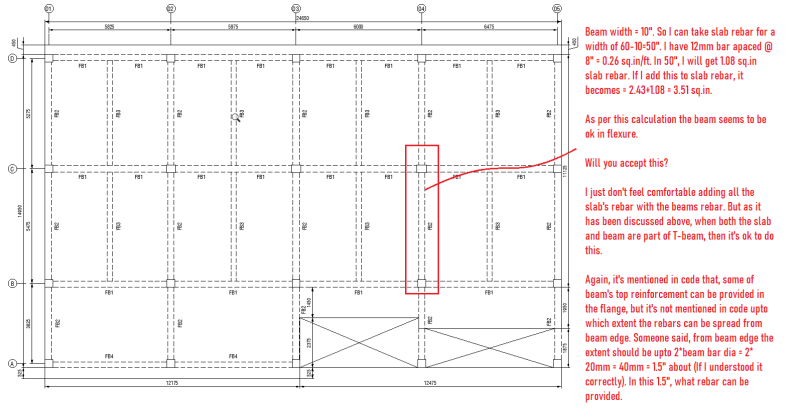NewbieInSE
Structural
- Dec 19, 2019
- 234
Hello all,
Slab requires reinforcement as it supports the loads above it. If I provide reinforcement for slab 10mm@8" at the top to meet the requirement, can I take the full advantage of this slab reinforcement in calculating the T-beam rebar adequacy of an existing RC beam?
I feel like I designed and provided the reinforcement which is required for the slab. Now if I give it as a loan to beam, then where is the reinforcement of the slab to cover its own stress.
Thanks.
Slab requires reinforcement as it supports the loads above it. If I provide reinforcement for slab 10mm@8" at the top to meet the requirement, can I take the full advantage of this slab reinforcement in calculating the T-beam rebar adequacy of an existing RC beam?
I feel like I designed and provided the reinforcement which is required for the slab. Now if I give it as a loan to beam, then where is the reinforcement of the slab to cover its own stress.
Thanks.

